How to Organize Baby Clothes
Organizing baby clothes is important, as it helps keep them clean and organized. First, sort the clothes by type (e.g., tops, bottoms, onesies). Then separate into sizes: newborn/preemie, 0-3 months, 3-6 months and so on.
After that give each size its own section in a dresser or closet. This will make it easier to find the correct size when you need it. You may also want to categorize items further such as sleepwear and special occasion wear for quick access when needed.
To make sure all clothing is clean before wearing again use laundry baskets with labels for dirty or clean items to help streamline your laundry process too!
- Step 1: Sort through the clothes and separate them into categories such as onesies, shirts, pants, dresses, socks, etc
- This will make it easier to organize the clothes in a way that makes sense for you
- Step 2: Assess your available storage space
- Measure out how much room you have and determine what type of storage options would work best for your needs
- Consider whether or not you need hanging space or drawers if more efficient use of space is desired
- Step 3: Purchase the necessary items to store baby’s clothing such as bins with lids, dresser drawers and/or hangers if needed
- If purchasing closet organizers look for ones that are adjustable so they can be easily adjusted as baby grows and their clothing needs change over time
- Step 4: Now begin organizing by first sorting all pieces according to size either by age (newborn – 24 months) or weight (0-9 pounds)
- Then group like items together within each category creating mini collections; i
- , all long sleeved onesies grouped together followed by short sleeved onesies then sleeves etc
- Step 5: Place everything in its designated spot – hang up what needs to be hung up and fold/place folded items in containers/drawers accordingly with labels attached for easy identification later on when things get mixed up again!
What is the Best Way to Sort Baby Clothes?
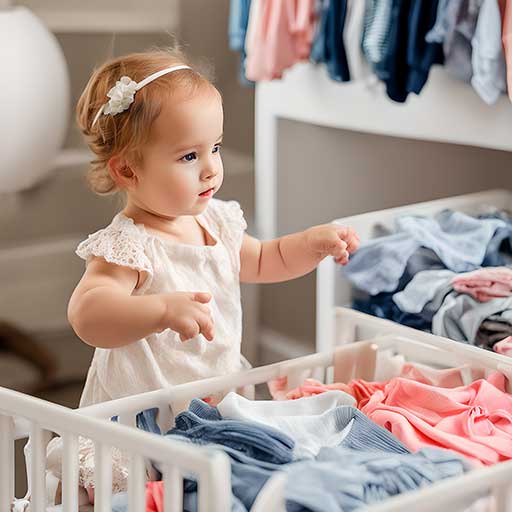
When sorting through baby clothes, it’s important to keep in mind that babies grow quickly and outgrow their clothing fast. To organize them effectively, start by separating the clothes into categories based on size. This could include sizes preemie, newborn, 0-3 months, 3-6 months and 6-12 months.
Additionally, you can break down each size category further according to type of clothing such as onesies, pajamas and sweaters. Finally sort each group into color order or pattern preference if desired for easy selection when getting dressed. Doing this will help ensure that you have all the right options available when your little one needs a new outfit!
When Should I Start Organising My Baby Clothes?
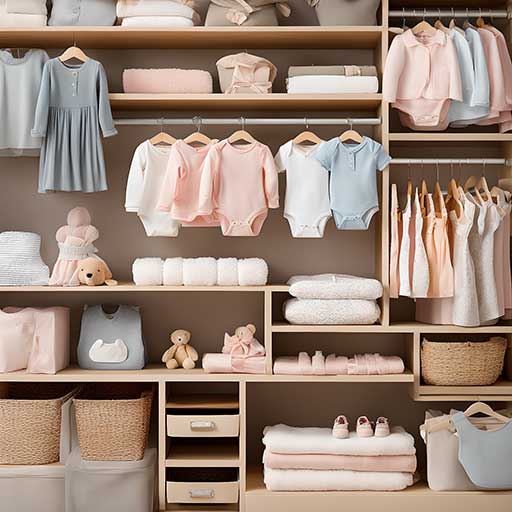
It is never too soon to start organizing your baby’s clothes. If you plan ahead, you can save yourself a lot of stress and anxiety when the little one finally arrives. Start by sorting out newborn-sized items from 0-3 months, as these are likely to be most used in the first few weeks.
Separate them into categories such as sleepwear, daywear and special occasion outfits so that it’s easier for you to find what you need quickly. Once your baby grows out of those sizes, move on to 3-6 months before eventually working through 6-12 month items. Get creative with storage solutions including drawers or shelves arranged according to size or color – this way everything stays organized throughout every stage of your baby’s development!
Is It Best to Hang Or Fold Baby Clothes?
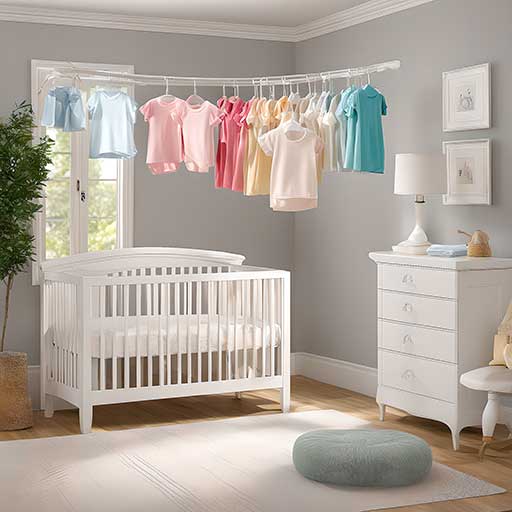
When it comes to storing baby clothes, the best answer is “it depends.” If you have room in your closet, hanging up your baby’s clothing can be a great way to keep them neatly organized and wrinkle-free. However, if space is an issue or if you don’t want to take up too much real estate in the nursery or playroom, folding may be a better option.
In addition to saving space, folding also makes it easier for both parents and caregivers to find what they need quickly as everything will be visible at once when stacked neatly on shelves or dresser drawers. Ultimately, whichever method works best for you and your family’s particular needs should take precedence over any other considerations!
How Do You Organize Baby Clothes That Don’t Fit Anymore?
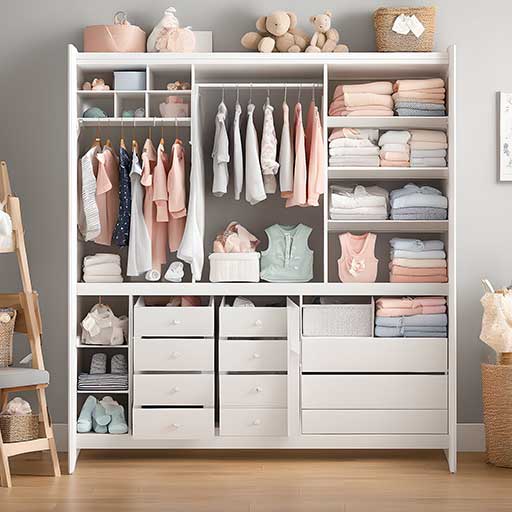
When organizing baby clothes that no longer fit, it’s important to think about the future. Consider donating them to a local charity or consignment stores, so they can be reused and recycled. You could also set aside some of your favorite pieces for sentimental reasons and store them in an album or memory box.
Additionally, you may want to keep any heirloom items passed down from family members for when your child grows up and is ready to wear them again. Finally, consider taking pictures of each outfit before parting with it – this way you’ll have a lasting memento of your little one’s early years!
How I Organize Baby Clothes & Changing Table! 2020 (Ikea Hemnes Dresser)
How to Organize Baby Clothes Without a Closet
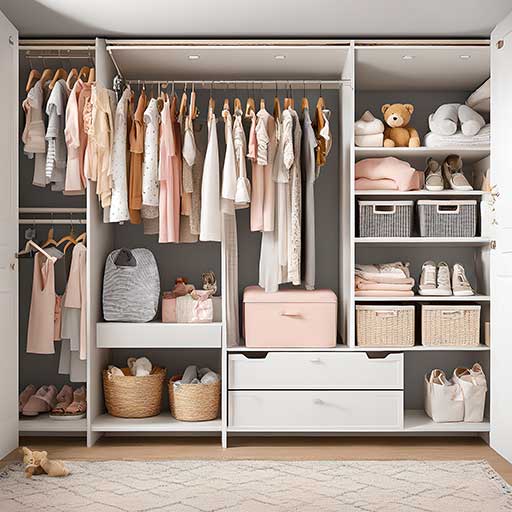
If you don’t have a closet to organize your baby’s clothes, there are still plenty of options. You can use wall-mounted shelves or storage bins to keep your little one’s clothing organized. An armoire is another great way to store and organize their clothes without taking up too much space in the room.
Hanging organizers or hooks on walls are also a great option – they provide easy access while keeping everything neat and tidy. Finally, drawers and baskets can be used to create an organized system for storing smaller items like socks, hats, and booties. With these tips, it doesn’t take much effort at all to keep your baby’s wardrobe organized!
How to Organize Baby Clothes in Dresser

Organizing baby clothes in a dresser is easy when you follow these simple steps. Start by sorting your items into categories such as onesies, pants, and shirts. Then, use drawer dividers to keep each category separate.
Finally, store different sizes of clothing together and label the drawers accordingly so that it’s easy to find what you’re looking for quickly. With this method, your dresser will stay organized no matter how much your little one grows!
How to Organize Baby Clothes in Small Space
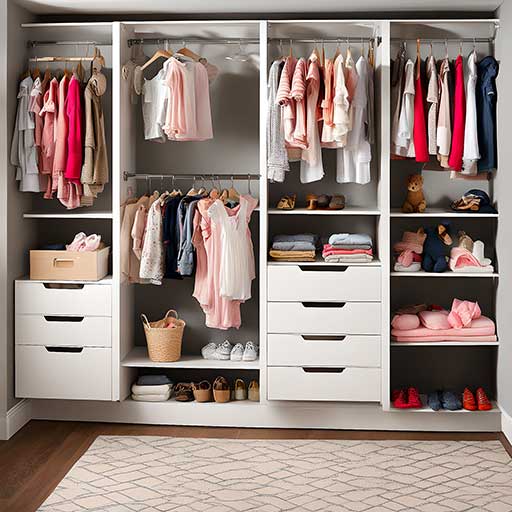
Organizing baby clothes in a small space can be tricky, but with a few simple steps it doesn’t have to be overwhelming. Start by sorting through the items and getting rid of anything that is too worn or stained. Then, separate out all the different sizes – newborn, 0-3 months, 3-6 months etc.
This will make it easier to find what you need when you’re looking for something specific. Finally, use bins or baskets to store each size together so they are easy to access whenever you need them!
How to Organize Baby Clothes by Size
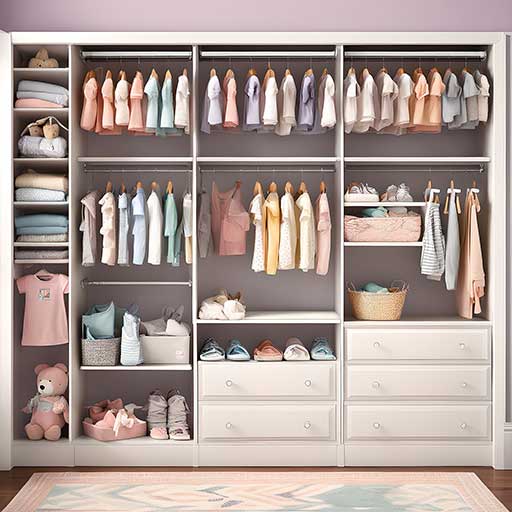
Organizing baby clothes by size is a great way to keep your little one’s wardrobe organized. Start by sorting through all of the clothing items and separating them into piles according to their sizes (e.g., Newborn, 0-3 months, 3-6 months). If you have multiple children in different age ranges, create separate bins for each child’s items.
Once sorted, use labeled drawers or boxes and organize the clothing items within those categories. You can also hang up special outfits on hangers and store them together for easy access when needed!
Conclusion
Overall, organizing baby clothes can be a daunting task but with the right steps and tips it doesn’t have to be. Start by sorting through all of your items, creating piles based on type or size. Follow up by storing clothes in an organized manner that makes them easy to access when needed.
Finally, utilize helpful storage solutions like dresser organizers and hanging garment bags to make life easier! With these simple tips you should now have everything you need for a tidy nursery closet.

Hi, Musette Beaulieu here. Being a full time housewife makes me a geek for washing and drying clothes. Who doesn’t love fresh smelled clothes? Carry on with me, I hope you get what you seek in this clothes drying journey.
